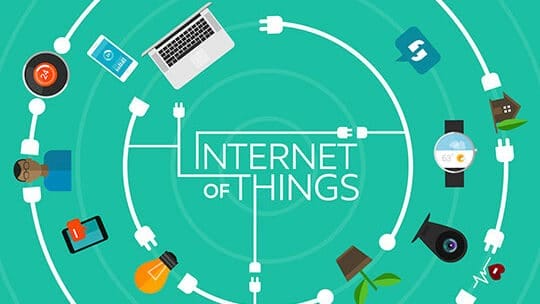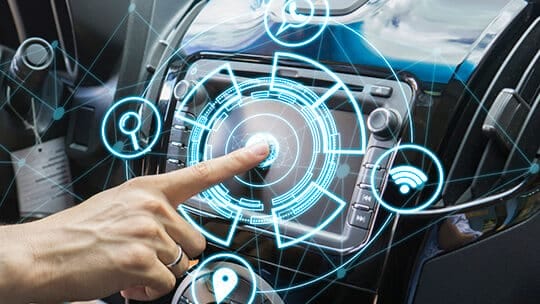5G is the latest generation of cellular network technology, succeeding the previous 4G LTE mobile networks. 5G networks offer blazing-fast internet and data transfer speeds of up to 20 Gbps theoretically. Most commercial 5G service providers give consistent internet speeds of up to 1 Gbps for practical use. However, the use of 5G is merely limited to data transfer and voice calls. 5G also enables many new-age technologies such as automated machines, remotely controlled robots, self-driving vehicles, and most importantly, the IoT.
The Internet of Things (IoT) is a rapidly emerging field of technology that has immense potential. The mainstream adoption of 5G is accelerating innovation in IoT and enabling new use cases.
What is 5G Technology?

Before we understand how 5G impacts the IoT, let us first understand the scope of possibilities that 5G brings. 5G technology is expected to be at least 100 times faster than 4G. 5G is now being incorporated in almost every major city and town in many countries across the world.
The arrival of 5G-enabled smartphones and 5G SIM Cards is changing the way people communicate and work. HD video calling, video conferencing, and live streaming have become the norm powered by 5G. 5G also offers ultra-low latency making it effective for many technological functions like self-driving vehicles and remotely controlled machines. 5G’s enhanced network capacity allows a large number of users to be connected to the same network without facing any slowdown in internet speeds.
What is IoT?

As mentioned above, the Internet of Things is an emerging technology that is still in the early stages of development. But it already has many proven use cases for industrial and other uses. In simple terms, IoT refers to a connected network of devices that are equipped with sensors and software. It is connected through the internet or Wi-Fi to carry out a function or multiple functions.
The simplest example of an IoT system is a ‘smart home’. You can control many aspects of your home such as lights, fans, speakers, etc. through a smartphone app or through voice commands. Automated industrial machinery and self-driving vehicles also work on the fundamental principles of IoT technology.
Slowly but surely, IoT is becoming an increasingly integral part of our lifestyle. The use of 5G has only accelerated the innovation and adoption of IoT systems.
Role of IoT in the Modern World

The applications of IoT in the modern world are wide-ranging.
Agriculture
In agriculture, IoT systems are used for ‘precision farming’. Sensors are deployed to constantly monitor different variables like soil moisture, temperature, irrigation, nutrients, fertilizers, etc. Using the data from these sensors allows farmers to make quick decisions for enhancing crop yield. It is improving the crop-growing processes through insights from the compiled data.
Healthcare
Now let’s check the healthcare sector. Wearable devices like smartwatches and patient monitoring devices can provide doctors with real-time data about a patient’s vital information such as blood pressure, heart rate, etc. The data from these IoT devices can allow doctors to detect potential diseases early on and start treatment before the patients suffer any ill health effects.
Logistics and transport
Lastly, IoT in logistics and transport has already become deeply integrated. When you order online, you can track the exact location and status of your order through the shopping app. This is made possible through IoT integration allowing for real-time tracking. The use of IoT systems in supply chain and inventory management also removes many inefficiencies and fast-forwards the process.
Manufacturing
Manufacturing is another industry where IoT can be used. It effectively cuts down costs and optimizes the manufacturing process. Using automated machines in an IoT system that can effectively communicate with one another to ensure the manufacturing process is carried on without any glitches. If any issues do arise, they can be quickly identified and dealt with using data insights.
In essence, IoT creates a large ecosystem of connected networks and machines. All work together to share data, optimize processes, and ensure that the users have the relevant data for critical decision-making.
Let us take a closer look at how 5G technology is going to enhance IoT. Also, let’s find out some of the challenges of integrating 5G into IoT in the future.
The Impact of 5G Technology on the IoT

The use of 5G technology in conjunction with the Internet of Things has already created many useful advances and innovations. The potential for IoT growth using the full capabilities of 5G is still being discovered. By utilizing the immense speed, ultra-low latency, and increased capacity of 5G networks, IoT systems, and connected devices can be used in a very efficient and effective manner, thereby increasing its use cases and adoption.
IoT systems are already being implemented in fields like city planning, healthcare, manufacturing, logistics and transportation, smart homes, etc. Using 5G to effectively boost the use of IoT has the potential to completely revamp and revolutionize automation in industries and optimize how well resources are allocated. Moreover, smart home solutions are also creating a better quality of life. It is bringing an elevated level of convenience to modern times.
At a basic level, using 5G for IoT systems will allow for faster communication between the various devices connected within an IoT network, with 5G seeds that go up to 1 Gbps. As a result, the IoT systems and devices connected to 5G will be extremely accurate in carrying out time-sensitive tasks. The high speed and low latency will allow communication and subsequent action within a few milliseconds.
Moreover, since 5G has increased bandwidth, the network can support a large number of IoT devices connected to it. Lastly, 5G technology supports improved network coverage and highly reliable connections. It is making IoT systems secure against network interruptions, lags, and disruptions.
5G Applications in IoT

Here are some of the common real-world applications of 5G in IoT systems. They are already being put to use across the world:
- In major cities and towns with a dense population, finding parking spots for your vehicles can be a hassle. However, IoT-enabled parking systems allow drivers to locate and reserve parking spots for their vehicles through their smartphones before they even reach the destination. This is a clear example of IoT solving real-world problems by incorporating 5G networks.
- As mentioned above, farmers can make use of a connected network of IoT sensors to monitor soil conditions, and crop and livestock health, as well as control farming equipment remotely without having to visit the farm themselves.
- Many cutting-edge medical technologies are making use of IoT for creative innovative procedures. For instance, doctors these days can perform surgeries on patients remotely using remotely controlled equipment using 5G technology that offers ultra-low latency.
- People can keep track of their homes while they are out on vacation through smart home systems. They can remotely use robotic vacuum cleaners, unlock and lock the house if someone needs to visit, and keep a lookout for thefts and burglaries with CCTV security systems connected to their smartphones, accessible with 5G.
- 5G is also highly beneficial in the field of interactive gaming. Users can access IoT-based VR and AR apps and games using 5G networks. 4G networks generally do not have the required bandwidth or latency to support AR or VR functions.
IoT 5G Use Cases for Businesses

Some of the important use cases of 5G-enabled IoT systems for commercial and business purposes include:
- IoT systems connected to 5G can be used to monitor the status of manufacturing machines, such as checking their operational health, oil levels, temperatures, production output, etc., and changes can be made remotely by users.
- Amazon has started using IoT-connected drones to deliver packages to people’s homes directly without having any people involved in the process, by using GPRS and 5G connectivity to navigate to the correct addresses.
- As mentioned, IoT-connected health devices now allow doctors to monitor their patient’s vitals remotely, as they can access real-time patient data through their 5G-connected computers or smartphones. For a deeper understanding of the technologies and methodologies involved in such remote monitoring, exploring how to monitor IoT devices can provide valuable insights into ensuring the effective and secure operation of these critical healthcare tools. This knowledge is essential not only for healthcare professionals but also for developers and technicians who are involved in the design and maintenance of IoT solutions.
- A futuristic use case for IoT is using the concept of ‘smart cities’ to use IoT sensors to monitor and manage traffic levels, collect data about pollution and water cleanliness, etc. Monitoring devices using 5G-enabled IoT technologies is becoming increasingly popular.
- AI is another important technology that is vital for IoT systems. IoT systems that are equipped with AI and connected to 5G networks can make instantaneous automated decisions without human intervention. Self-driving cars are a fitting example of this type of technology.
Challenges of 5G for IoT

5G is still a relatively new technology. It has a few limitations which should be kept in mind while incorporating it into 5G systems. Here are some challenges that might arise in the process:
- In most countries, 5G is not yet available in most remote regions, only in major cities and big towns. So, incorporating 5G into IoT systems in these remote areas may not be a possibility in the near future.
- The set-up of 5G infrastructure is quite expensive. It may require significant capital in order to set up a 5G network from scratch to enable IoT systems. Moreover, the cost of installing the IoT systems will need consideration.
- Since a number of different devices are connected to a single network when it comes to IoT systems, the risks of cybersecurity attacks and hacking attempts also increase as there are more devices/access points that hackers can target. Security for 5G-enabled IoT networks must be monitored continuously and updated to deal with cybersecurity threats.
To Conclude

There are millions of IoT systems that have already been deployed across the world. As 5G becomes the norm, the Internet of Things will change the way people use technology. From smart homes to automated manufacturing and self-driving, IoT is set to provide significant quality-of-life improvements. However, the initial costs of 5G infrastructure set-up and research in IoT will have to be undertaken for quick progress.





